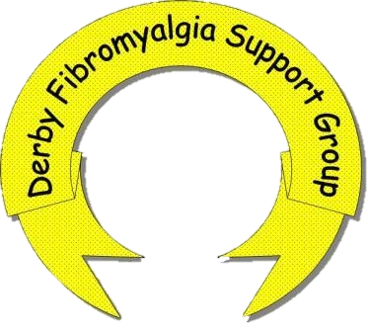The word Fibromyalgia comes from a Latin word and two Greek words:
- Fibro from the Latin word Fiber or Fibra meaning fibrous tissue.
- My from the Greek Myo meaning muscle
- Algia from the Greek meaning pain
Fibromyalgia is a syndrome that consists of widespread pain and fatigue. The pain is felt as all over aching or burning. The pain may be worse on some days than others. The pain may change location and severity within the body and seems to affect the parts most used.
The fatigue can range from just feeling tired to flu like fatigue that wipes you out. The fatigue can come and go and some people can suddenly feel drained of energy like carrying bags up hill.
Fibromyalgia is quite common, it is said to be more common than Rheumatoid Arthritis and in some cases even more painful. People with mild or even moderate fibromyalgia are usually able to live normal lives, once the medication is at the right balance. However with more severe symptoms some people may not be able to hold down a regular job or have much of a social life.
Fibromyalgia affects more women than men, at a ratio of 9:1, there is no known reason for this and there is no difference between men and women as to the way in which they are affected or in the way that symptoms affect people. No one, man or woman gets it worse.
Symptoms
On top of the pain and the fatigue there are a wide range of other symptoms that some people get.
These include:
- Un-refreshed sleep – waking up tired and stiff
- Headaches – ranging from ordinary types to migraine
- Irritable bowel – alternating diarrhoea and constipation, sometimes accompanied by gas in the abdomen or nausea
- Cognitive disturbances including lack of concentration, temporary memory impairment and word mix up
- Clumsiness and dizziness
- Sensitivity to changes in the weather and to noise, bright lights, smoke and other environmental factors
- Allergies
Diagnosis
Fibromyalgia is hard to diagnose because it affects different people in different ways and with different symptoms.
Fibromyalgia cannot be diagnosed with the conventional ways such as blood tests, scans or x-rays.
Many of the symptoms can be found within other syndromes such as Chronic Fatigue or ME.
In the 1970’s two Canadian doctors developed a way of diagnosing Fibromyalgia and in the 1990’s an international committee published diagnosis requirements that are now widely used throughout the world.
When all other forms of syndromes are ruled out using traditional methods and the patient’s history there are two main symptoms which lead to the diagnosis of Fibromyalgia:
- Pain in all four quadrants of the body for at least the last three months.
- Pain in eleven out of 18 tender points of the body when pressed. The tender points are hardly noticed by the patient until pressed.
Causes
It is believed that Fibromyalgia develops within people after some kind of trauma, such as an accident, fall, viral infection, operation or even childbirth or emotional event.
Sometime though Fibromyalgia can start without any obvious trigger.
Current studies, by America, show that a deficiency in Serotonin in the central nervous system coupled with a threefold increase in the neurotransmitter substance P found in the spinal fluid and which transmits pain signals.
This increases the pain received, for example, normal people perceive most pain as an ache or mild pain because of the heightened Substance P this is perceived more severely.
Managing Fibromyalgia
The best way to cope with fibromyalgia is to use a number of techniques that ease the symptoms as much as possible.
Relaxation is one technique that works really well for almost everybody with fibromyalgia. It reduces tension in the mind and body right away. The results are calming for all the symptoms, especially for the pain. Relaxation can be learned from books, tapes, videos or special courses.
Heat is important. A hot water bottle and hot baths or showers will help reduce pain and banish morning stiffness. Soaking hands and feet in hot water for a few minutes can ease their aching. Exercise is the most common prescription for fibromyalgia and Dr Pellegrino’s section on this has invaluable advice about the form this should take.
Although no particular diet has been shown to help fibromyalgia, a healthy, balanced diet is important to provide protein, vitamins and minerals. It is best to avoid or at least cut down on coffee, tea and alcohol. Some sufferers have a tendency to gain weight and this can be distressing in itself. If you follow a healthy diet this should in turn help with your weight control.
People with fibromyalgia can have good days and bad days. On a good day it is important to pace yourself; overdoing it may simply make matters worse. Rest is also important. Listen to your body when it tells you to slow down.
Is there a cure?
There isn’t a cure for fibromyalgia. Instead, treatment focuses on reducing your symptoms and improving your quality of life. This is often accomplished through the use of medications, self-care strategies, and lifestyle changes.
To find a cure, researchers need to understand what causes people to develop this condition. This remains unclear. Research has identified three areas that may contribute to the development of fibromyalgia: genetics, illness, and trauma. A mixture of genetic and lifestyle risk factors may also cause a person to develop the condition.
